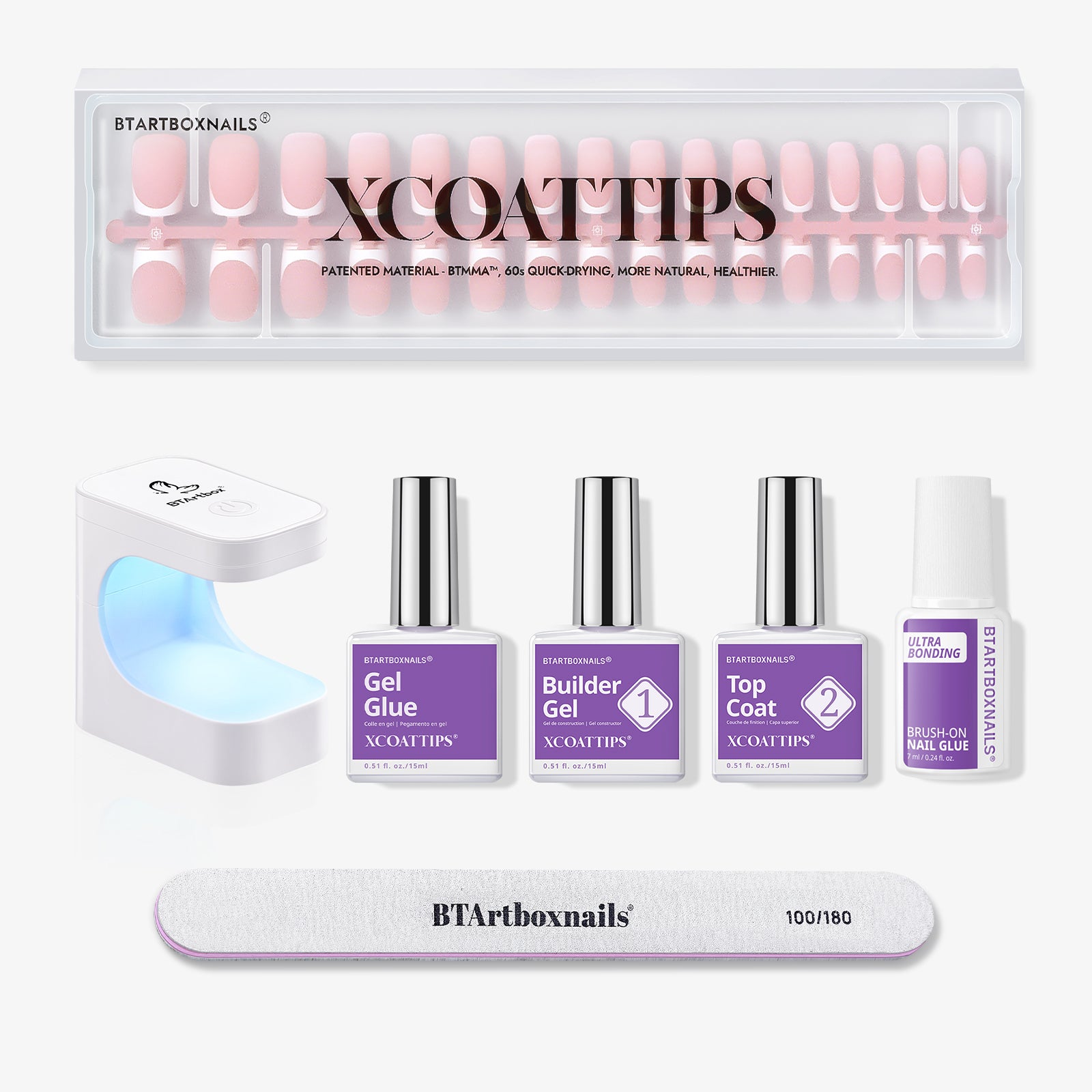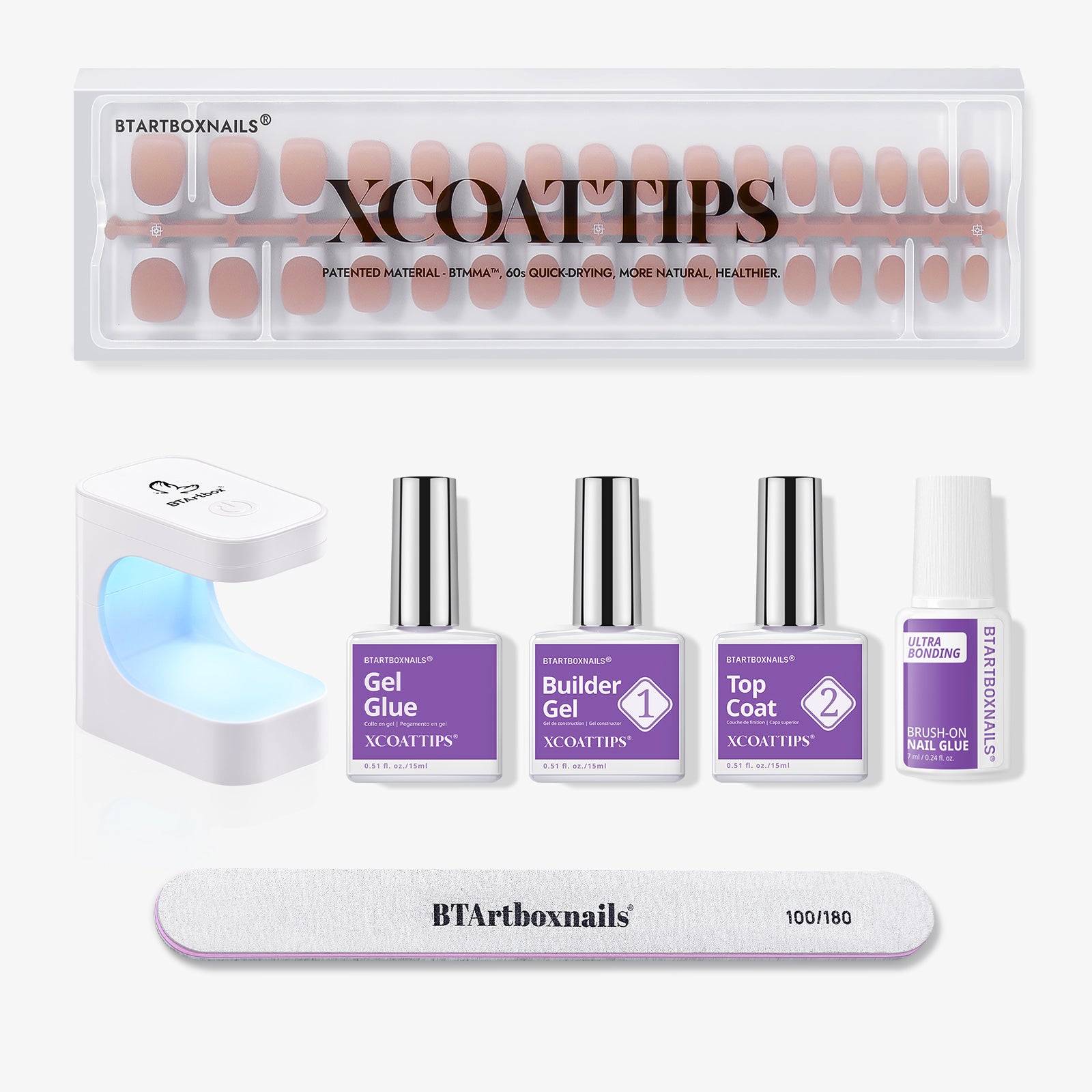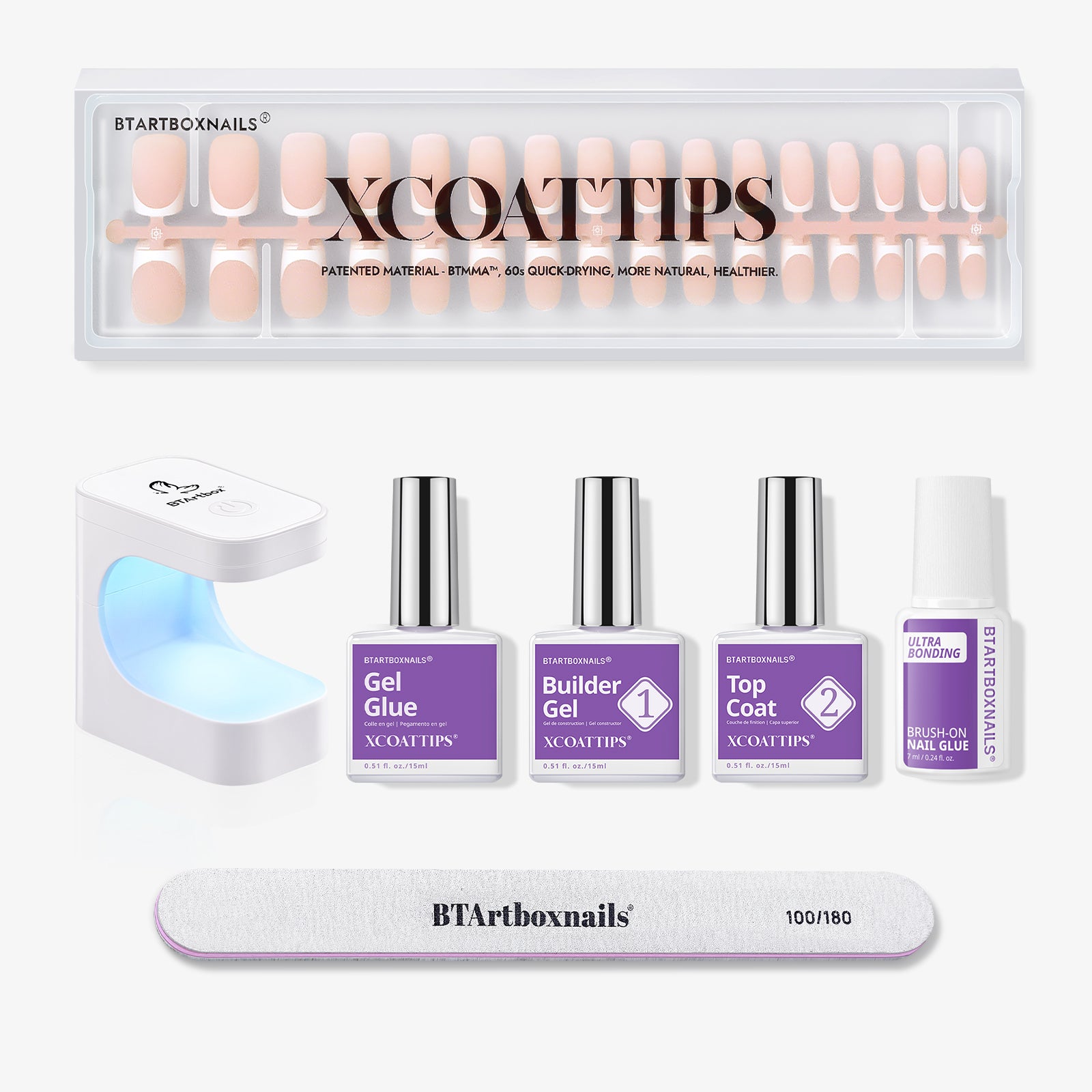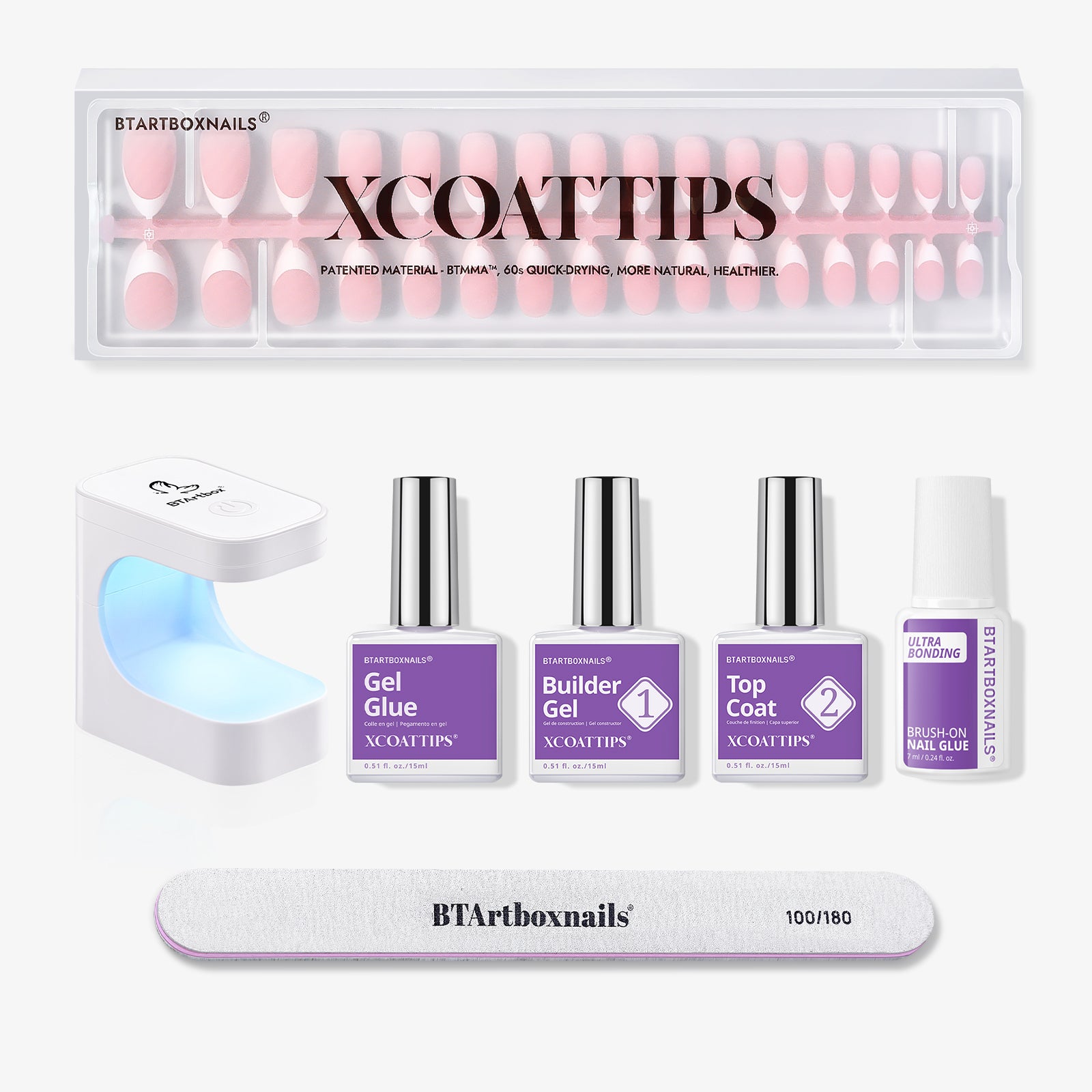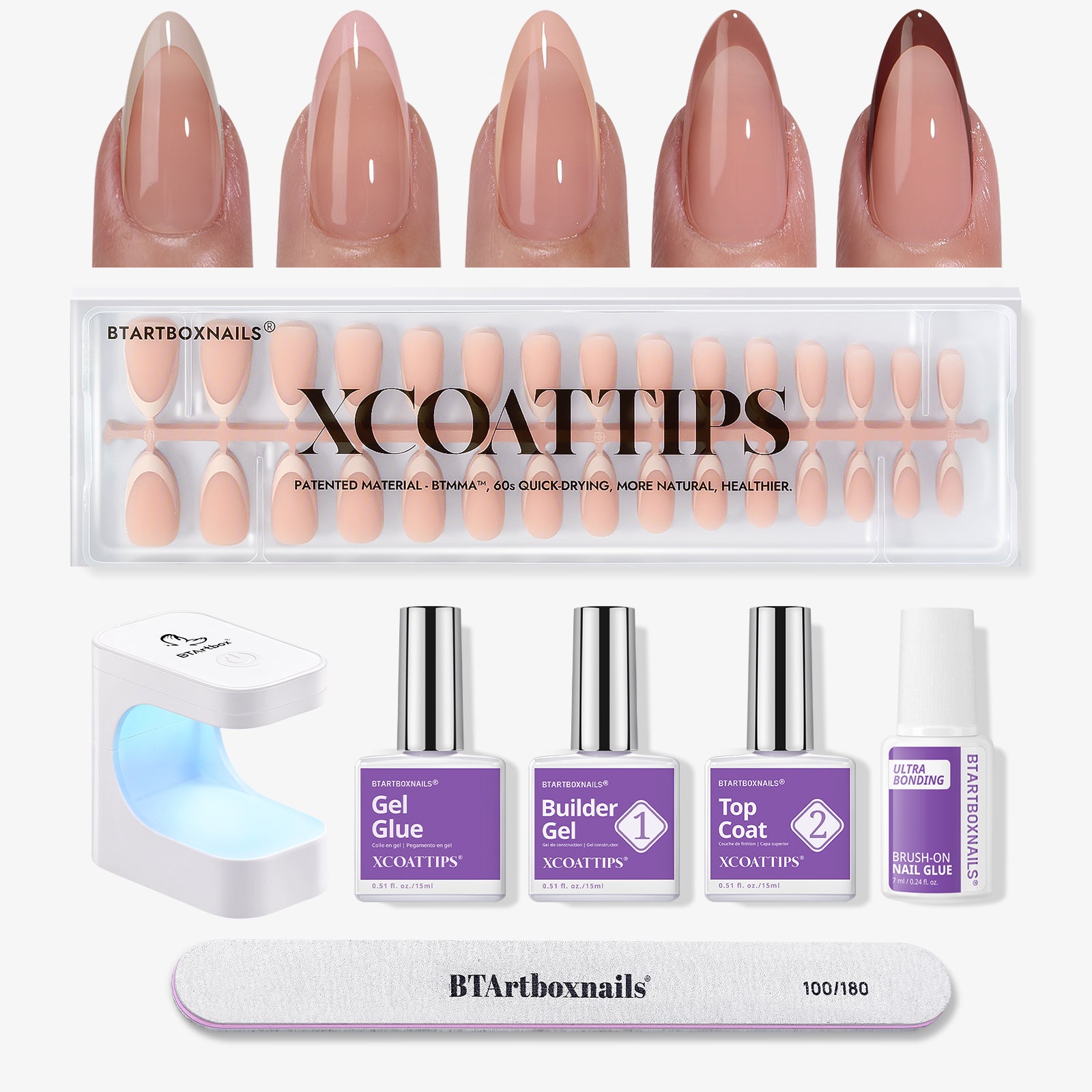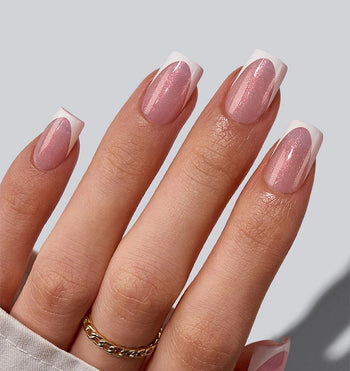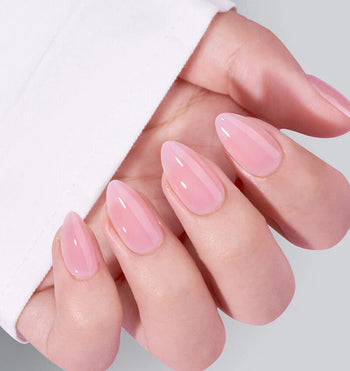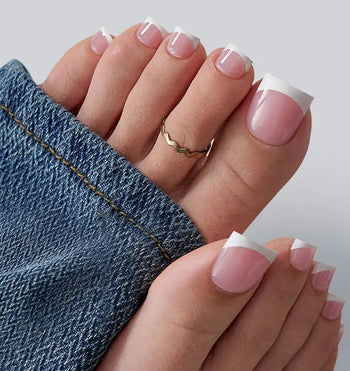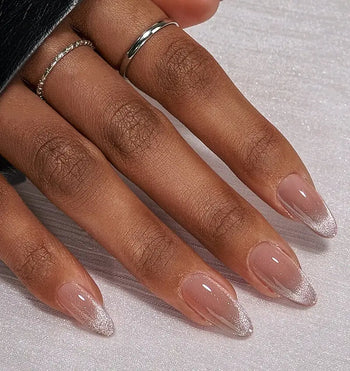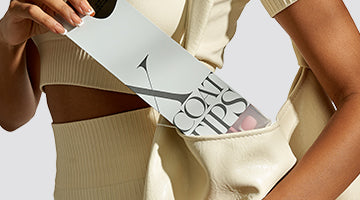Ever wondered what is a fake nail? Fake nails, also known as artificial nails, are a popular way to enhance the appearance of your hands and nails. They are a common accessory in the beauty industry, used by people of all ages and genders to achieve a variety of different looks.
Fake nails are available in a range of styles, sizes, and materials, making them a versatile and customizable option for anyone looking to add a little extra flair to their nails. One of the main benefits of fake nails is that they can be used to create a wide variety of different looks.
This guide dives into the basics of fake nails, exploring the different styles and materials available. Whether you're looking to add length to your nails or experiment with colors, fake nails have got you covered.
Perfect for special events or everyday glam, discover how these little accessories can make a big impact on your style.
Definition and History of Fake Nails
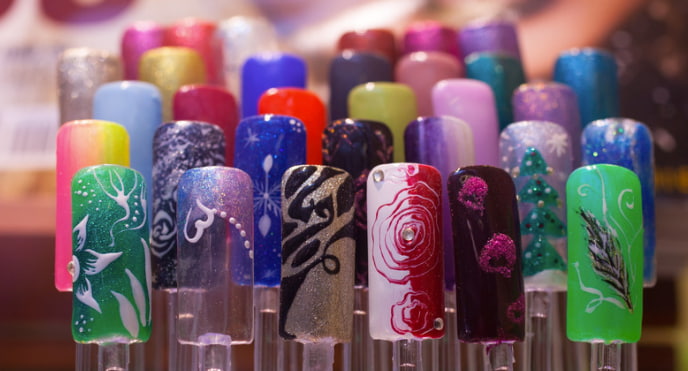
Fake nails, also known as artificial nails, are an extension of natural nails. They are created using various materials such as gel, acrylic, or silk. Fake nails are used to enhance the appearance of natural nails or to cover damaged or broken nails.
History of Fake Nails
The history of fake nails dates back to the 1950s when a nail technician named Fred Slack created a product called "Flex-Nails." This was a form of artificial nail that was made of cellulose acetate, which is a type of plastic. Although the product was not widely adopted at the time, it paved the way for further developments in the industry.
Over the years, the popularity of fake nails has grown, and today they are a common beauty accessory. There are two main approaches to creating artificial nails: tips and forms. Tips are heavyweight "nail"-shaped plastic plates glued on the end of the natural nail, or glued on top of the entire nail bed if it is a full cover tip or "press-on," and can have gel, dip, or acrylic added on top. Forms, on the other hand, are used to sculpt the nail from scratch using gel or acrylic.
5 Common Types of Fake Nails
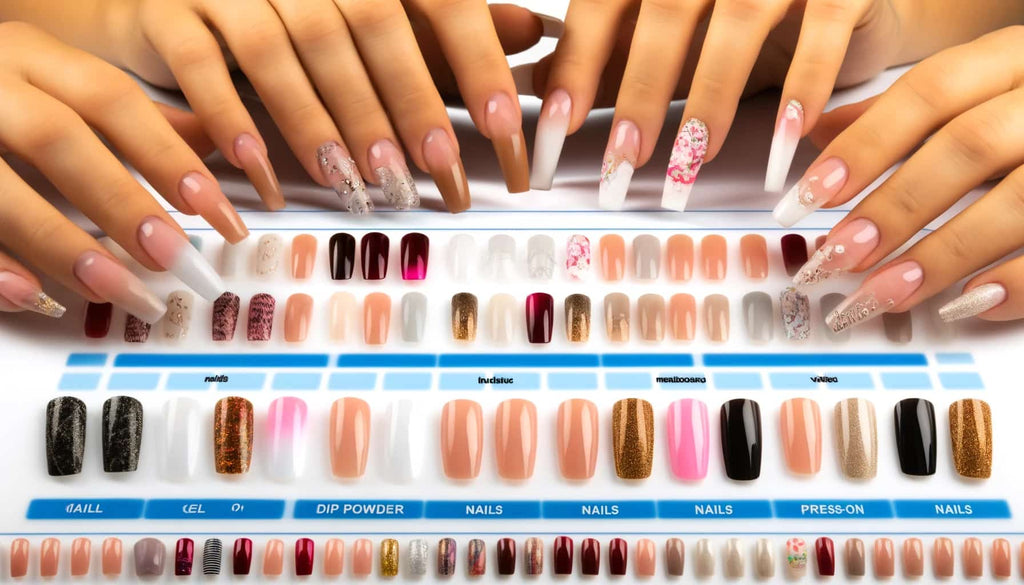
When it comes to fake nails, there are a variety of options to choose from. Here are some of the most popular types of fake nails:
1. Acrylic Nails
Acrylic nails are a classic choice when it comes to fake nails. They are made by mixing a liquid and a powder to create a hard layer over your natural nails. They can be shaped and painted to your liking, and can last for several weeks with proper maintenance. However, they can be damaging to your natural nails if not applied or removed correctly.
2. Gel Nails
Gel nails are another popular option for fake nails. They are made by applying a gel polish to your natural nails and then curing it under a UV or LED lamp. They are known for their durability and can last up to three weeks. They also tend to look more natural than acrylic nails.
3. Press-On Nails
Press-on nails are a convenient and affordable option for fake nails. They are pre-designed and can be easily applied at home without the need for any special tools or equipment. They can last for several days but are not as durable as other types of fake nails.
4. Dip Powder Nails
Dip powder nails are a newer type of fake nails that have gained popularity in recent years. They are made by applying a base coat, dipping your nails into a powder, and then sealing it with a top coat. They are known for their long-lasting durability and can last up to four weeks.
5. Fiberglass and Silk Nails
Fiberglass and silk nails are less common type of fake nails. They are made by applying a fiberglass or silk wrap to your natural nails and then sealing it with resin. They are known for their natural look and can last for several weeks with proper maintenance.
Benefits and Drawbacks of Artificial Nails
If you're looking for a way to enhance your cosmetic appearance, artificial nails might be the solution for you. Here are some benefits and drawbacks to consider before making a decision:
Benefits
-
Natural Look: Artificial nails can help you achieve a natural-looking manicure without having to wait for your natural nails to grow. They are also available in a variety of shapes and sizes to suit your preferences.
-
Durable: Artificial nails are generally more durable than natural nails, which can be prone to breaking or chipping. This makes them a good option for people who use their hands frequently or have weak nails.
-
Versatility in Nail Art: Artificial nails provide a blank canvas for nail art, allowing you to experiment with different colors, designs, and textures.
-
Nail Protection: Artificial nails can help protect your natural nails from damage caused by everyday wear and tear, such as typing, cleaning, or using tools.
Drawbacks
-
Cost: Artificial nails can be expensive, especially if you opt for professional application. At-home kits are available, but they can still be pricey and require some skill to apply properly.
-
Upkeep: Artificial nails require regular upkeep, including filling and maintenance. This can be time-consuming and costly.
-
Potential for Damage: If not applied or removed properly, artificial nails can damage your natural nails. They can also cause infections if bacteria get trapped between the artificial nail and your natural nail.
Materials Used in Fake Nails
There are various materials used to make fake nails, including acrylic, gel, silk, and other composites. Each material has its own unique properties and benefits, and choosing the right one depends on your preferences and needs.
1. Acrylic
Acrylic nails are made by mixing a liquid monomer with a powder polymer to create a paste that is applied to the nails. The paste hardens when exposed to air, creating a durable and long-lasting nail. Acrylic nails are popular because they are affordable, easy to apply, and come in a wide range of colors and designs.
2. Gel
Gel nails are made by applying gel polish to the nails and then curing them under a UV or LED lamp. The gel polish hardens to create a strong and flexible nail that can last up to three weeks. Gel nails are popular because they look natural and are less damaging to the natural nail than acrylic nails.
4. Silk
Silk nails are made by applying a silk wrap to the nails and then sealing it with resin. The silk wrap adds strength and durability to the natural nail, making it less prone to breakage and damage. Silk nails are popular for those with weak or brittle nails, as they can help protect and strengthen the natural nails.
5. Other Composites: fiberglass, linen, and paper
There are various other materials used to make fake nails, including fiberglass, linen, and paper. These materials are often used as wraps or overlays to add strength and durability to the natural nail. Each material has its unique properties and benefits, and choosing the right one depends on your preferences and needs.
How Are Fake Nails Applied?
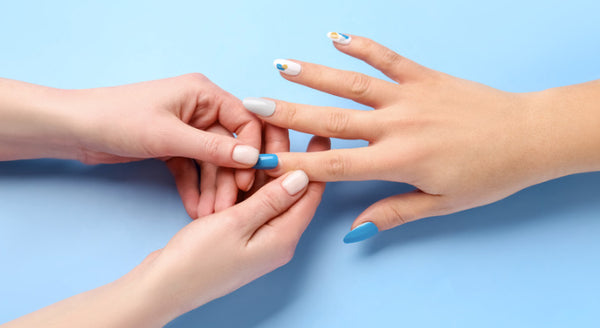
The application process for fake nails may vary depending on the type of fake nails you choose. Here are some general steps that professionals follow when applying fake nails:
-
Prepare your natural nails: Before applying fake nails, ensure that your natural nails are clean and dry. Trim and file your nails to your desired length and shape. If you have any old nail polish on your nails, remove it using nail polish remover.
-
Choose the right size and shape: Select the right size and shape of fake nails for each of your fingers. You can use a sizing chart to help you find the right size. Make sure that the fake nails fit your natural nails properly.
-
Apply adhesive: Apply a small amount of nail glue or adhesive to the back of the fake nail. Be careful not to apply too much glue as it can cause the fake nail to lift or pop off.
-
Place the fake nail: Carefully place the fake nail over your natural nail, starting at the cuticle. Press down firmly on the fake nail to ensure that it adheres to your natural nail.
-
Shape and file: Once the fake nail is in place, use a nail file to shape and file the nail to your desired length and shape. Be gentle when filing to avoid damaging the fake nail.
-
Finish with polish: Apply a top coat of nail polish to your fake nails to give them a glossy finish. You can also add nail art or designs to your fake nails if you wish.
It's important to note that the application process may differ slightly depending on the type of fake nails you choose. For example, acrylic nails require a different application process than press-on nails. It's always best to consult with a professional nail technician if you're unsure about how to apply fake nails.
Maintenance and Care for Fake Nails
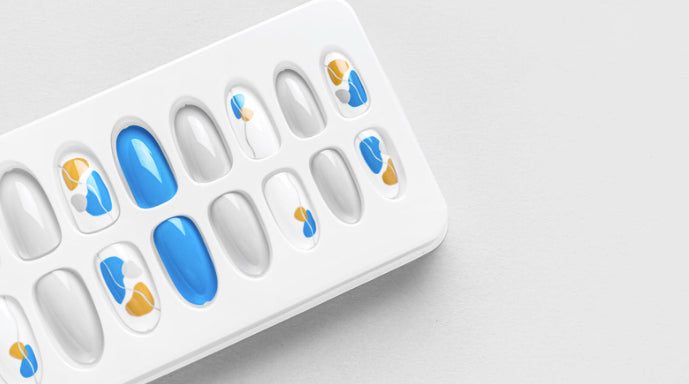
Taking care of your fake nails is important to ensure they last longer and stay looking their best. Here are some tips on how to maintain and care for fake nails:
1. Keep Them Clean and Dry
One of the most important things you can do to maintain your fake nails is to keep them clean and dry. This means washing your hands regularly and drying them thoroughly each time. Avoid using warm air dryers as they can damage the nails. Instead, pat your hands and nails with a clean, dry towel.
2. Avoid Harsh Chemicals
Fake nails can be sensitive to harsh chemicals, so it's important to avoid exposure to them as much as possible. This includes cleaning products, hair dye, and other chemicals that can come into contact with your nails. If you do need to use harsh chemicals, wear gloves to protect your nails.
3. Don't Bite Your Nails
Biting your nails can damage both your natural nails and your fake nails. It can also introduce bacteria and germs to your nails, which can lead to infections. If you have a habit of biting your nails, try to break it by using a bitter-tasting nail polish or seeking professional help.
4. Use Nail Oil
Nail oil can help to keep your fake nails moisturized and healthy. Apply it to your nails and cuticles regularly to prevent them from becoming dry and brittle. You can also use a moisturizing lotion to keep your hands and nails soft and supple.
5. Get Regular Touch-Ups
Fake nails require regular touch-ups to keep them looking their best. This involves filling in the gaps that appear as your nails grow. It's important to get these touch-ups every 2-3 weeks to prevent damage to your natural nails. If you notice any damage or lifting of the fake nails, visit a professional nail technician to have them repaired.
How to Safely Remove Fake Nails

Fake nails can be a fun and convenient way to enhance your look, but they can also be damaging to your natural nails if not removed properly. Here are some tips to safely remove fake nails without damaging your natural nails:
-
Soak your nails in acetone: Acetone is a common nail polish remover that can also be used to remove fake nails. Soak your nails in acetone for 10-15 minutes to loosen the adhesive holding the fake nails in place.
-
Use a cuticle pusher: After soaking your nails, use a cuticle pusher to gently push the fake nails off your natural nails. Be careful not to apply too much pressure or force, as this can damage your natural nails.
-
Buff your nails: After removing the fake nails, use a nail buffer to gently buff your natural nails. This will help to remove any remaining adhesive and smooth out any rough edges.
-
Moisturize your nails: After removing the fake nails, be sure to moisturize your natural nails with a nail oil or cream. This will help to prevent your nails from becoming dry and brittle.
Remember, it's important to remove fake nails safely to avoid damaging your natural nails. If you're unsure about how to remove your fake nails, consider visiting a professional nail technician for assistance.
Choosing the Right Type of Fake Nails for You
When it comes to choosing the right type of fake nails, there are several factors to consider. You want to choose a type that fits your lifestyle, nail health, and aesthetic preferences. Here are some tips to help you make the right choice.
1. Consider Your Lifestyle
Your lifestyle should be the first factor to consider when choosing the right type of fake nails. If you have an active lifestyle, you may want to opt for a more durable and long-lasting option like acrylic nails. However, if you have a more relaxed lifestyle, you may prefer a more natural-looking option like press-on nails.
2. Think About Your Nail Health
It is essential to consider your nail health when choosing the right type of fake nails. If you have weak or damaged nails, you may want to go for a gentler option like gel nails. Gel nails are less damaging to your natural nails and can help improve their health over time.
3. Consider Your Aesthetic Preferences
Your aesthetic preferences are also an important factor to consider when choosing the right type of fake nails. If you prefer a more natural look, you may want to opt for a nude or French tip design. However, if you prefer a bolder look, you may want to go for a design with glitter or bold colors.
Conclusion
In conclusion, fake nails are a popular beauty accessory that can be used to achieve a variety of looks. Whether you're looking for a simple, natural look or something bold and dramatic, there are many types of fake nails to choose from, including acrylic, gel, and wraps.
When deciding whether or not to get fake nails, it's important to consider all of the factors discussed in this article, including the cost, maintenance, and potential risks. It's also important to choose a reputable salon or to learn how to apply fake nails properly at home to avoid any potential damage to your natural nails.
Overall, fake nails can be a great way to enhance your beauty routine, but it's important to make an informed decision and take proper care of your nails. Check out Btartbox Nails' variety of fake nails for a relaxed and elegant manicure experience. Explore their short fake nails, nail extensions, milky pink nails, and sexy fake nails.
Frequently Asked Questions
What are the differences between acrylic and gel nails?
Acrylic nails are made by mixing a liquid and powder to create a hard protective layer over your natural nails. Gel nails, on the other hand, are made from a gel-like substance that is cured under a UV light. Acrylic nails are generally stronger and more durable, while gel nails are more flexible and natural-looking.
How long do fake nails last?
The lifespan of fake nails depends on the type of nails and how well they are maintained. Acrylic nails can last up to three weeks before needing a fill-in, while gel nails can last up to four weeks. However, it's important to note that both types of nails can break or lift if not properly cared for.
How are fake nails made?
Fake nails are typically made from a combination of plastic, acrylic, or gel materials. The process of making fake nails involves creating a mold of the nail shape, then applying the chosen material to the mold and curing it under a UV light. The nails are then shaped and buffed to the desired length and thickness.
Who invented fake nails?
The invention of fake nails is credited to a dentist named Frederick Slack, who created a nail extension made of dental acrylic to help his patients with nail-biting habits. However, the practice of using artificial nails for cosmetic purposes dates back to ancient Egypt, where women would use ivory, bone, and gold to create nail extensions.
How to remove fake nails?
Fake nails can be removed by soaking them in acetone for 10-15 minutes, then gently pushing them off with a cuticle pusher. It's important to never force the nails off, as this can damage your natural nails. If you're unsure how to remove your fake nails, seek the help of a professional nail technician.
